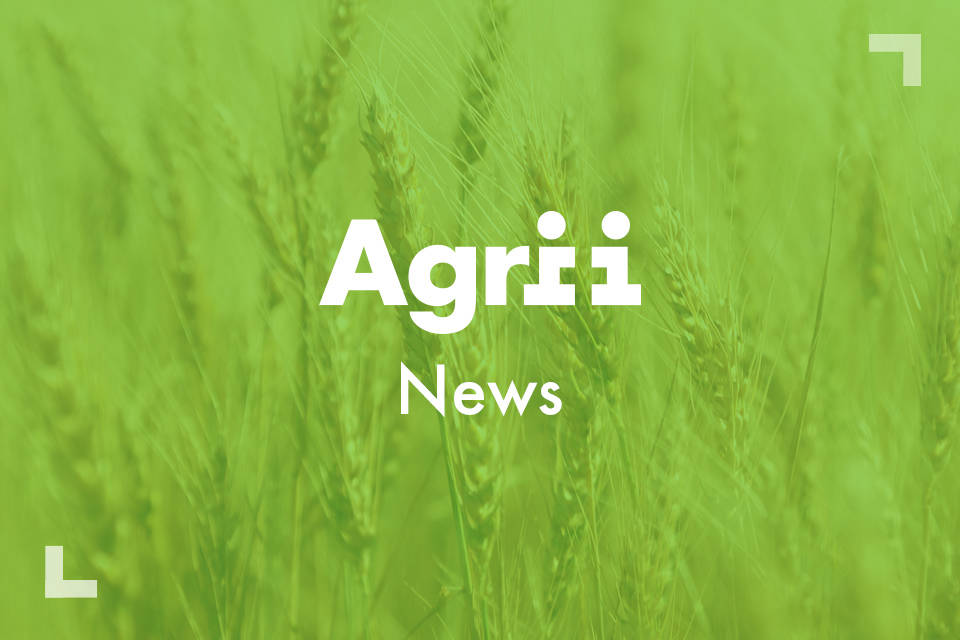Species rich grassland for SFI
This content was published in good faith on 10th November 2024. While we strive to keep our information accurate and current, agricultural practices and recommendations may evolve. For the latest guidance and advice tailored to your specific needs, please contact your local Agrii representative.
The Sustainable Farming Incentive offers a huge range of options for farmers, providing valuable financial incentives to carry out actions that enhance the landscape, increase biodiversity, boost local wildlife, improve the environment and, most importantly, help to protect the future of the farm.
Of these hundreds of actions, the species-rich grassland SFI option is among the most interesting.
The primary goal of the action is focussed on restoring the UK’s rural landscape, creating vibrant meadows with a diverse range of plants. These meadows are synonymous with our countryside, but the action goes way beyond just creating a picturesque landscape.
Abundant species-rich grasslands can deliver a wealth of benefits to the farm and the local environment as well as creating a nutrient-rich and diverse forage for livestock. These grasslands can also be used for haymaking – another attractive option under the SFI.
Perhaps the most interesting aspect of the species-rich grassland however is the fact it is the first endorsed SFI action under the ambitious funding scheme. This means farmers looking to maintain or restore species-rich grasslands will be able to access expert support to ensure the success of initiative.
In this article we explore exactly what is species-rich grassland? Investigate what is an endorsed SFI action? And, we go through exactly what you need to know about taking advantage of the species-rich grassland action as well as providing the information you need to complete this option and secure the farm funding.

Approach Us
We’re here to help your business ambitions. See how we could work together, we’d love to hear from you.
Let's TalkWhat is Species-rich Grassland?
Species-rich grassland is simply open, grassy land that features a wide variety of wildflowers, different grasses and other species that are native to the region.
These meadows that feature an abundant mix of plants and flowers are an important part of the character of rural life in the UK. They also play heavily into our traditions and these meadows should be managed in a traditional way, grazing them with livestock and using them for haymaking.
Crucially, above ground, these species-rich grasslands are valuable habitats, supporting an array of under threat plant species, insects and birds.
Below ground, these grasslands also deliver a range of benefits, combatting erosion, improving soil health and capturing carbon.
The goal of the SFI action is to help to maintain, improve and restore these habitats across the UK, helping to increase biodiversity, boost the number of important and under-threat plant species and support priority wildlife species such as bumblebees, butterflies, bats and a range of birds.
What is an Endorsed SFI Action?
From the outset, the Government has said some SFI actions, like those that are aimed at important targets like protecting and supporting important habitats, species and historic features, will become endorsed.
The first SFI action to be endorsed is the species-rich grassland option as this will help to not only restore our landscape but will help to increase the numbers of threatened native plant and wildlife species.
This endorsement means that when farmers and landowners apply for the action, Natural England or Historic England will be notified and they will then have to confirm if the land is suitable to be a species-rich grassland.
While this initially may seem like another layer of bureaucracy, the good news is that the endorsement also means you will get expert help and support to confidently manage these priority habitats and complete the SFI actions.
Plus, this action is one of the most lucrative SFI options available for farmers and landowners.
GRH6: Manage Priority Habitat Species-rich Grassland
As GRH6 species rich grassland requires a different, more traditional management approach than the other SFI grassland actions, there are some key differences.
For example, the duration of this action is five years, and it is also a static action, meaning it must remain on the same piece of land throughout. However, farmers and landowners who undertake the action will be paid £646 per hectare per year for maintaining the habitat.
The good news is that a number of other SFI and Countryside Stewardship actions can be completed on the same piece of land, including soil, nutrient and pest management options as well as the new haymaking supplement.
Eligible land includes permanent grassland and arable land but, as it is an endorsed action, a Natural England advisor will check to see if the land is already a priority habitat species-rich grassland or has the potential to restore or create a new species-rich grassland.
Under the action, the types of “priority habitat species-rich grassland” include: lowland calcareous grassland; lowland dry acid grassland; lowland meadows; upland hay meadows; and purple moor-grass and rush pasture.
Farmers and landowners who want to apply for the GRH6 species rich grassland action will also need to provide a map showing the location along with soil analysis that shows the available phosphorous in the soil using the “Olsen P” test.
Managing the Species-rich Grassland SFI Action
As we’ve discussed, completing the species-rich grassland SFI action does take a different, more traditional approach and there are a number of key things you need to consider.
Management of each species-rich grassland will be different dependent on the location and the priority “indicator” species that need to be included.
The goal is to create a diverse plant community, with a variety of different plant heights and sward structure. Ultimately, a healthy, intact grass sward will need to be maintained throughout the year and you should avoid having any bare areas of earth.
Management of the grassland needs to be done with grazing or by cutting, or a combination of both. However, grazing with cattle in a rotational system is recommended as this will help to create a mix of vegetation heights and the cattle’s hooves will disturb the earth, creating opportunities for wildflower seeds to germinate and invertebrates to burrow.
Other livestock can be used for grazing, but you should use a rotational system that creates areas where plants are given time to flower and set seed and to also avoid destroying plant communities with overgrazing.
If you plan to cut the species-rich grassland, you’ll need to cut patches of the grassland at different heights and at different times of the year, making sure there are areas of cut and uncut vegetation. You will also need to remove the cuttings to keep nutrient levels low as this will help to encourage a wider range of flowering plants.
Before cutting, check for nesting birds and delay any activity until fledglings have left the nest.
Another option is to use the meadow for haymaking and there is a new supplementary SFI code (GRH7) that pays £157 per hectare per year for bringing back the traditional practice of having field-dried hay.
Under this option, you must not cut or graze the grass sward for at least eight weeks during the spring and summer before harvesting it. This is to ensure the flowers and grasses have time to set seed and that means typically waiting until late summer.
Farmers and landowners will also be expected to have a clear understanding of what “indicator species” are present in the species-rich grassland and record how frequently they occur. These indicator species are the priority plants that important for your type of land. The Government has created a full list of indicator species for species-rich grassland and these are all listed against the relevant types of land.
To check what indicator species are present, do a W-shaped walk across the area and stop at regular intervals to inspect a square metre of land in front of you. In that area, record each indicator species you find. “Frequently occurring” indicator species will be found in five or more inspection spots out of 10, while “occasionally occurring” indicator species will be found in three or four inspection spots out of 10.
With all of this, evidence will be key so its important to keep a record of any field operations at a land parcel level, keep any associated invoices, take photographs and retain any associated documents.
What Must You Avoid Doing Under the Species-rich Grassland SFI Action?
Unsurprisingly, with a lengthy list of what you will need to do to manage a species-rich grassland, there are a number of things you must avoid doing too.
As this is about maintaining traditional landscapes, you cannot plough, cultivate or reseed the land, unless you are restoring it at the beginning under the guidance of Natural England.
You must avoid any mechanical activity while birds are nesting and you can’t carry out any supplementary feeding for livestock, except for mineral blocks.
No digestate, pesticides or inorganic fertilisers can be applied to the land apart from cattle, sheep or horse manure in the years when land is cut for hay. Herbicides can only be used to weed wipe or spot treat injurious weeds or invasive, non-native species.
You also can’t carry out any drainage work, except to modify existing drainage, and you also must not top more than half of the total area, except when controlling invasive species, bracken or areas dominated by rushes.
Summary
Too often, farmers are accused of looking back on the traditional ways with rose-tinted spectacles, but this renewed focus on species-rich grassland helps to demonstrate the value of some of our traditional farming practices.
Species-rich grasslands are part of the fabric of the British countryside and they add a huge amount of value to not only the environment above and below ground, but also to the wider farm by helping to boost biodiversity, bringing in pollinators, helping to control pests and disease and, crucially, improving soil health – the foundation of any successful farming operation.
The new SFI action recognises this and rewards farmers for returning to traditional practices that add value to our land.
If you’d like to know more about how best to manage and restore species-rich grassland and how to take advantage of the SFI scheme, speak to your Agrii agronomist.

Agrii Environmental Services
Download the Brochure
The Agrii Sustainable Farming Incentive Knowledge Hub

SFI Arable Options

SFI Soil health

SFI Precision Agriculture

SFI Integrated Pest Management (IPM)

SFI Direct Drilling

SFI No Till

SFI SAM1 - Soil Management Plans

SFI Hedgerows

SFI Herbal Leys

SFI Companion Cropping

SFI Cover Crops

SFI Winter Bird Food

SFI Nitrogen Fixing

SFI Grassland Options

SFI improved grassland management

SFI Vineyard Cover Cropping

SFI Species Rich Grassland
Featured News
News - 17/06/25
Half of OSR area underwritten by establishment schemes
News - 27/05/25
Honouring Marek Nowakowski: A Day at Buckingham Palace
News - 01/05/25
Reducing the environmental impact of maize
News - 17/03/25
Agrii Partners with RapidAIM to Revolutionise Codling Moth Management in UK Apple Orchards
News - 07/03/25
Shining a Spotlight on Women in Agriculture




